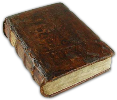I have argued elsewhere that a book is essentially its text. The format, the presentation? A secondary consideration.
its text. The format, the presentation? A secondary consideration.
However, with the central role music plays in On the Head of a Pin, and the care I took with the cover, I have to admit that there’s really more to it than the text. I’m very much an idea person, but I understand that imagery and sound play a role, even if the sound is only the sound of the words as you merely imagine them while reading silently.
In that vein, author Amy Bloom discusses the part music played in her novel Lucky Us:
The music of the thirties and forties—swing, the rise of pure jazz, even honky-tonk—was glorious. We can’t wipe out Bing Crosby’s cloying croon, but the rise of Hank Williams, Sr., makes up for Bing. The creators of “Orange Is the New Black” knew what they were doing when they included “I Saw the Light.” It moves all listeners, regardless of belief or lack thereof. The joy and genius of Fats Waller, the growl of Big Joe Turner, the irresistible combination of Billie Holiday and Count Basie (and of Billie Holiday and Artie Shaw) are ornaments on a period of exceptional music, and diving into it was one of the great pleasures of my listening, and writing, life. These songs, these voices, and the great instrumentals still resonate with me, and that’s why each chapter title is a song from that period.
And, book cover designer Peter Mendelsund talks about how surprisingly hard it was to design the cover for his own book:
Coming up with a cover for his book, “What We See When We Read,” a playful, illustrated treatise on how words give rise to mental images, was excruciating, he said. As the author, he felt as if no single image could sum up the book’s premise. As the jacket designer, he had to put something on the front, or resign in disgrace. His first attempt was stark and off-putting: a plain black cover with small white text. “It was like stage fright,” he said. “I just seized up.”
_
